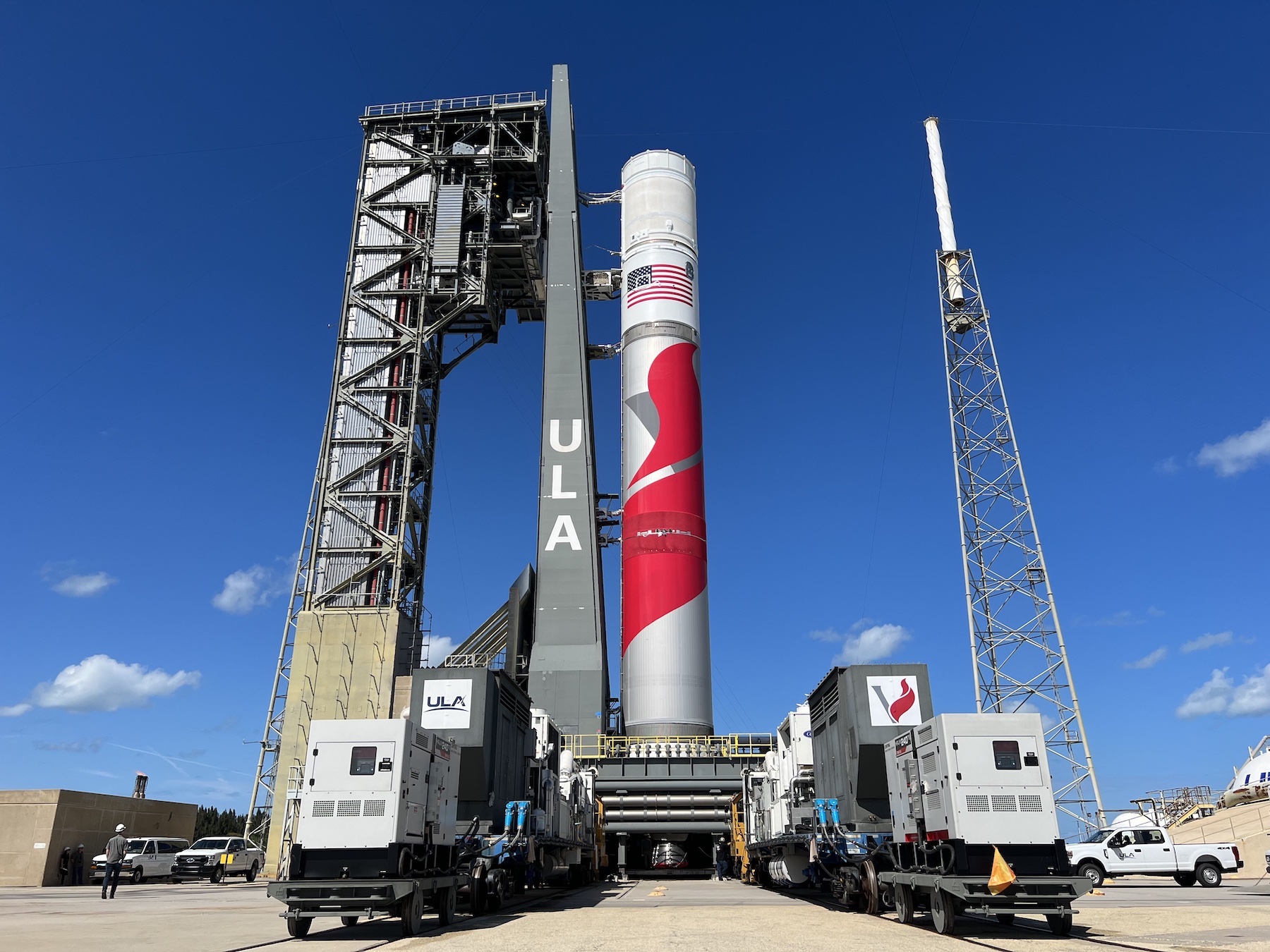Latest News

The Vulcan Certification-1 (Cert-1) rocket at Cape Canaveral in Florida in March 2023. Photo: ULA
United Launch Alliance (ULA) expects to debut the Vulcan Centaur rocket in the fourth quarter of this year, after solving an anomaly discovered during qualification testing in March, CEO Tory Bruno told reporters on Thursday. He does not expect the further launch delay to impact National Security Space Launch (NSSL) missions for the U.S. Space Force.
ULA was previously targeting May 4 for its first launch, but the rocket’s Centaur V upper stage exploded during qualification testing in late March at NASA’s Marshall Space Flight Center in Alabama, grounding the launch campaign for the anticipated debut.
Bruno described the anomaly, saying there was a leak in a weld on the hydrogen tank at the top of the structure that happened during its 15th test. The leak grew during the test, and caught fire, rupturing the liquid oxygen (LOX) tank as well.
Bruno said the crack came from a load intensification on that spot. Although the Centaur V is based on Centaur III, the prior upper stage is on a smaller scale with a different geometry and did not have this kind of issue. In addition, ULA is using a laser welding technique on this vehicle and discovered that the strength of the weld in this situation was not as strong as it had previously been assessed. The combination of higher load and lower strength in the weld caused the crack to begin.
“We were already 15 tests in, which is considerably more testing and exposure to loads in many more pressure cycles, and lots more time with the structure sitting under pressure than would ever happen in any single flight,” Bruno said. “All of that accumulated and by the time we got halfway through the 15th run, we had this leak, which grew and then eventually caused this fire and over pressure.”
He described the fix as “low tech,” it’s adding another layer of stainless steel to that area. ULA implemented this fix into the dome that was currently under construction, which would have been used in the third vehicle. It will now be swapped out for use in the first flight unit. The second vehicle, which is fully fabricated, will be converted to a test asset to finish the testing.
At the time of the anomaly, ULA was working to qualify the design for any possible flight trajectory in any mission — roughly 45 tests total. To save time, the launcher will just qualify the design for the trajectory of the first flight. The fourth vehicle which is currently being built, will replace the testing asset and be used to finish the qualification tests for every possible flight trajectory. All other parts of the vehicle are already certified for flight.
Bruno said ULA is insured for events like this and insurance will largely cover the costs.
Recent BE-4 Anomaly
This call came just a day after CNBC reported that a Blue Origin BE-4 engine exploded during testing last month. That engine was scheduled to be shipped to ULA for a future Vulcan rocket, raising further concerns.
Bruno said it was a “routine acceptance test,” explaining the difference between qualification tests and acceptance tests. Qualification tests, like the test in the Centaur anomaly, verify that a design is good, and then that design is used in production. Acceptance tests [ATPs] are performed on every single component to ensure the workmanship confirms to the design standard. In this case, the BE-4 engine did not pass its acceptance test, which is a normal part of testing.
“ATP failures across the rocket are not uncommon, they’re going to continue through the life of the production program,” Bruno said. “This doesn’t indict the qualification at all.”
He also added — because it is early in the life of the rocket, the testing settings were not dialed in enough to shut down the test before it caught fire.
Launch Manifest Schedule
ULA now expects to debut Vulcan in the fourth quarter. Its first customer is Astrobotic’s lunar lander, and two demonstration satellites for Amazon’s Kuiper constellation. As Astrobotic’s payload is a lunar lander, it can only launch on a handful of days each month, Bruno said. ULA is working with the customer to determine the launch windows in the fourth quarter.
The second planned mission is Sierra Space’s Dream Chaser, which Bruno will fly a few months after the first mission. Then, a National Security Space Launch (NSSL) mission will fly later in 2024 as the third launch. Bruno said he could not share which Space Force mission it is, but the Space Force has said has that Vulcan will launch USSF-106 as its first national security mission.
“That time frame allows us several months to review and analyze the data together with our Space Force customer, which is well in advance of the first National Security Space mission,” Bruno said.
Get the latest Via Satellite news!
Subscribe Now